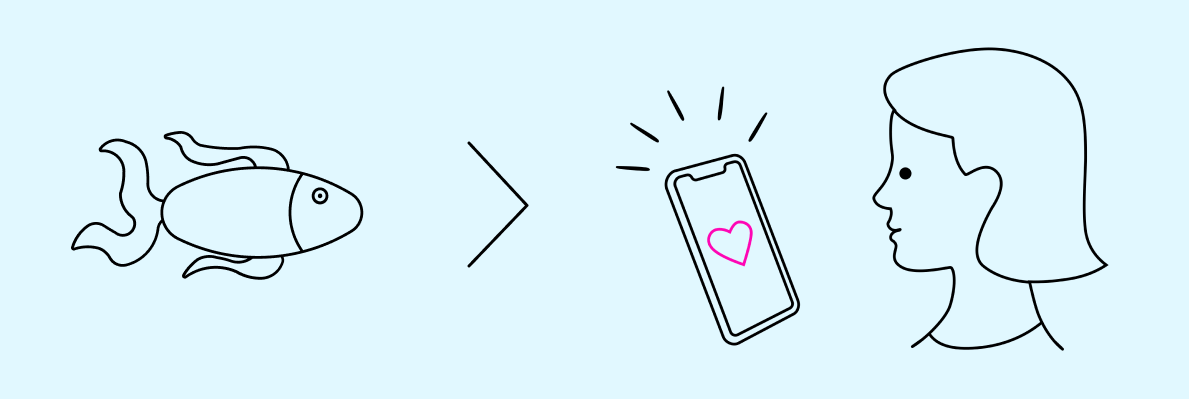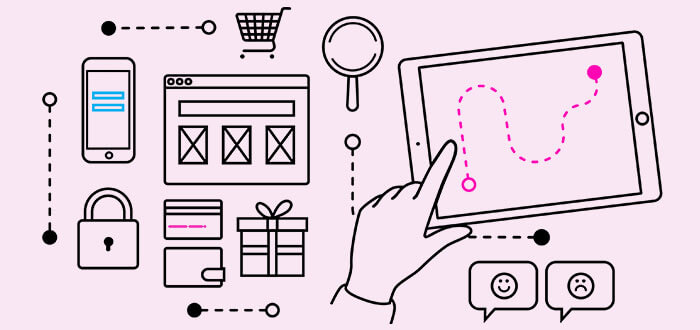An attention span less than a goldfish!
Whilst the evidence of this is not exactly scientifically proven, most of the research is valid data based on tracking user activity, specifically within a web browser.
With such a potential decline, it’s more important that websites focus on maintaining their users' attention than just providing good quality and value.
With this in mind it becomes logical that websites are turning to more attention grabbing techniques to increase conversions. These techniques include videos and animation which we are all familiar with on most modern websites but the key is on the end users’ attention span, more importantly grabbing it and maintaining it.
Whilst adding video to a website is likely to draw the attention of a user to engage with it, maintaining their attention and creating a conversion from it takes more effort. Adding long product showcases may engage a user to click and start viewing but how long does that video play before they lose their attention and leave the page without becoming a conversion?
The same goes for page animation, most modern sites have fancy fade/slide in animations which looks nice (or not depending on your view) but is it converting the end users? is it just another distraction? if it does engage the user, is it engaging for the right reason?
Typically, a page with clear and engaging video or animated content is likely to convert 80% better than static content. This is more than enough reason to take video and animation seriously if you want to convert users to sales. Add to this that the average user is 60% more likely to watch a video if available ‘BEFORE’ reading any static content, it makes no sense to ignore the opportunity.
My videos don’t convert
Well no, just adding a video may or may not have a positive impact to your conversion rates, the quality of the video, the content and the length of the video plus much more all impact its effectiveness, this is the same for any animation. Just having a video or animation is not the same as a well placed and engaging one. And remember what is engaging to you may not be engaging to your end user, you need to understand why the user is on your page and what they expect. So good ground work to understand who your audience is is critical before creating any media assets.
So what's the secret?
Everything, a video that makes a user go ‘WOW!’ may still not convert just like a high quality production video could equally fail to deliver on its intention.
Video or animation has to have a purpose, it needs to make the user ‘buy in’ and/or ‘relate’.
This is why a lot of web video producers and animators are focusing heavily on ‘storytelling’ by combining the skill of telling a good emotionally engaging story combined with the technical aspects of video or animation production with functional design to promote a connection with the audience that no technical specification or product description will compare to.
So, tell me a story
Storytelling via video and animation for the web is not necessarily the structure you expected as a child when you get told ‘Let me tell you a story..’, it’s about providing information in a way that the end user can relate and feel comfortable and confident.
An example of holding a users attention span via storytelling to generate conversions would be focusing on ‘selling’ your brand, you can of course focus on a product but selling the brand sells more than selling a single product.
Think of a user buying an Apple iPhone, there are two buyers in this scenario: the one that buys in via the ‘product’ and one that buys in via the ‘brand’.
The one that buys in via the product buys an iPhone, they may also purchase EarPods but the chances they expand to a Apple watch or Mac computer is less likely until they have bought into the brand after their experience of their current purchase, making future conversions a little harder as you have to get the user to buy into the next product.
The user that buys into the brand and buys an iPhone may equally desire a Mac computer or Apple watch as they are already sold on the brand, the product range is equally as desirable. These are easier upsells or at very least easier future conversion.
Buying into a brand is an effective way to increase conversion, when a user has been sold on a brand they think “I need a new Dyson” not “I need a new vacuum cleaner”.
This clears the path for easier conversion as they are instantly thinking of your brand product and not the competitors.
Apple have done a similar thing with their products, they have raised their products to brand status, users who have bought into Apple think iPhone, iMac, MacBook instead of “mobile phone”, “desktop computer” or “laptop”.
What is the likelihood these users are going to go research and buy an LG mobile phone or a HP computer or laptop?
Back to storytime..
Selling a brand in a focused and engaging way that appeals to your end users is likely to promote a conversion. Take for example Mango who chose to produce a video showcasing a range of their catalogue in a lifestyle video which was interactive. The video production is heavily focused on their target audience so will engage that audience, the interactive elements provide opportunity to be informed about specific products showcased along with the option to convert to a sale.
Mango is a prime example of a high end production of storytelling right, but we don’t all have to expand the budget to this level. Simple timeline animations explaining and reassuring the end user with a clear call to action can be as equally as effective. Take the British Assessment Bureau for example who clearly explain via animation the timeline of what the user is to expect, providing the user with clear and informative information that makes them feel confident to take the next step.
Happily ever after..
Whilst I can’t promise all stories have a happy ending, there should be no reason your end users and yourself should see benefits from adding a narrative via engaging interactive media to your website.
The key is to remember not to add anything that further adds distraction but further supports informing the end user into making a decision.
Less is more and remember that it's only effective if your end users can relate to it.


